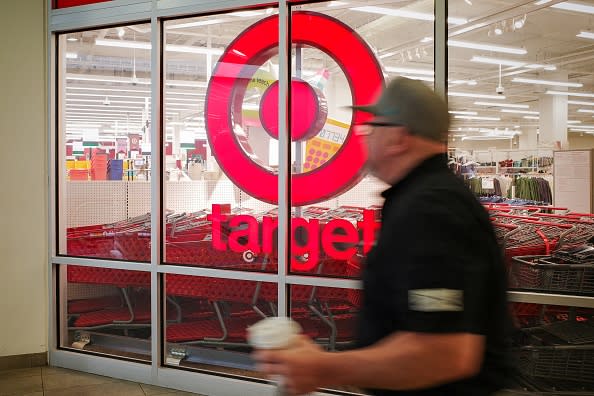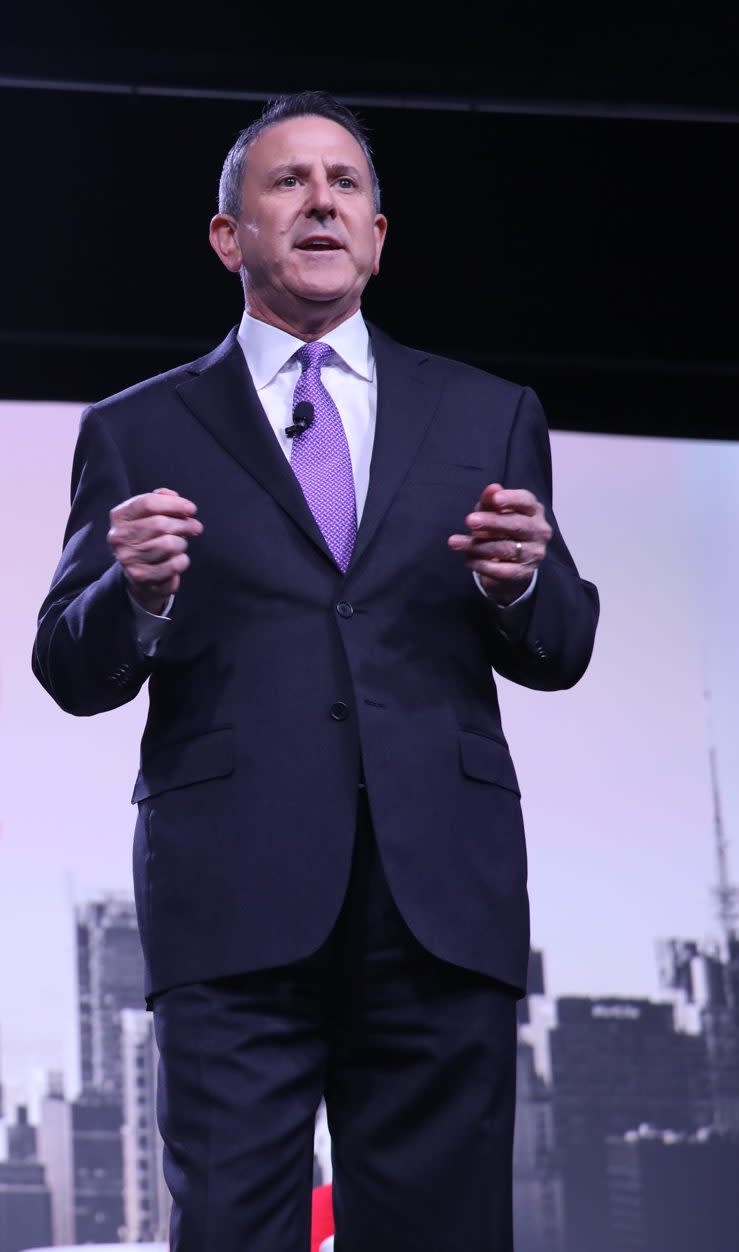Target Hit by Discretionary Pullback, Pride Controversy

Updated Aug. 16 at 5:12 p.m.
It’s topsy-turvy time at Target Corp., which is facing challenges both economic and cultural.
More from WWD
The discounter turned in big second-quarter profits — and its first quarterly revenue decline since early 2019, as cash-strapped shoppers stayed away from discretionary goods, like apparel (apparently in favor of other options, including offprice giant The TJX Cos. Inc., which posted solid gains for the quarter).
Target also cut its outlook for the year, with Brian Cornell, chair and chief executive officer, laying out a host of consumer troubles this year on a conference call with analysts.
“The rollback of government efforts to support consumers during the pandemic including stimulus payments, enhanced child care tax credits and the suspension of student loan payments, presents an ongoing headwind that consumers continue to manage,” Cornell said.
Target also got caught in the middle of the culture wars in the quarter, after its Pride collection spurred threats and protests, particularly around tuck-friendly swimwear and styles with extra crotch coverage. In turn, a coalition of pro-pride groups called on the retailer to not give in to “bullies.”
“I want to make it clear: We denounce violence and hate of all kinds, and the safety of our team and our guests is our top priority,” Cornell said. “So to protect the team in the face of these threatening circumstances, we quickly made changes, including the removal of items that were at the center of the most significant confrontational behavior.
“Pride is one of many heritage moments that are important to our guests and our team, and we’ll continue to support these moments in the future,” he said. “They are just one part of our commitment to support a diverse team, which helps us serve a diverse set of guests. And as we talk to these guests, they consistently tell us that Target is their happy place, somewhere they can go to escape and recharge. So as we navigate an ever-changing operating and social environment, we’re committed to staying close to our guests and their expectations of Target.”
Being the “happy place” for all the customers who walk into the company’s nearly 2,000 stores is a tall order — especially when Target is dealing with so many other cross currents in its business.
Net income for the quarter shot up more than four times to $835 million, or $1.80 a diluted share, from $183 million, or 39 cents, a year earlier. And earnings per share came in 37 cents ahead of the $1.43 analysts expected, according to FactSet.
Still revenues for the three months ended July 29 fell 4.9 percent to $24.8 billion from $26 billion. And comparable sales dropped 5.4 percent with growth in the essentials & beauty and the food & beverage categories offset by declines in discretionary categories, which includes apparel.

The retailer also faced a very different environment a year ago, when it was in the midst of a painful inventory realignment after the company ramped up orders post-pandemic, but ran into a suddenly warier consumer faced with inflation not seen since the early ‘80s.
That reset has the company on much different footing today.
Inventory was down 17 percent at the end of the quarter, driven by a 25 percent decline in discretionary categories.
But this trick of doing less with more — driving profits up with sales falling — will only last so long and Target cut its outlook for the year given the recent sales results.
The discounter is now looking for earnings this year of $7 to $8 per share, down from the $7.75 to $8.75 projected in May. Given that the second-quarter came in ahead of expectations, that means there will be even more pressure felt in the back half numbers.
Comparable sales for the year are now forecast to be “around a midsingle digit decline” where the company had been looking for “a wide range from a low-single digit decline to a low-single digit increase.”
Investors chose to focus on the here and now, locking onto strength in the quarter and driving Target shares up 3 percent to $128.75 on Wednesday.

Cornell also offered up a broader take on Target, highlighting how much the company has changed over the past four years — a period that saw sales increase by more than $30 billion annually.
“Retail is an ongoing journey,” the CEO said. “The continuous process of listening to consumers and rapidly evolving to meet their preferences. To do that well, you need to have the right assets in place, which allow you to quickly evolve as your guests wants, needs and preferences change.”
Over the past decade, Target has invested billions into its stores, which act as hubs and also fulfill e-commerce orders, now include Ulta Beauty shops, same-day delivery services, Starbucks drive-through pickup and more.
Neil Saunders, managing director of GlobalData, said there’s only so much Target can do when faced with “the frugal mindset that has taken hold of shoppers.”
“Even good merchandising and a stellar assortment can’t completely change the economic realities of those who shop there,” Saunders said.
But he said there’s more work that can be done in apparel and home.
“There still isn’t anywhere near enough newness or excitement,” Saunders said. “Target seems content with churning out the same old designs and products. This isn’t interesting for shoppers, nor does it entice them to buy — especially when they are more considered.”

Target’s working on that and next month will begin selling looks from the buzzy brand Rowing Blazers, including more than 100 pieces of men’s, women’s and children’s apparel, accessories, home, outdoor play and pet products. Most looks go for under $30.
In the meantime, others are certainly making the fashion connection with shoppers.
TJX said its second quarter sales increased 8 percent to $12.8 billion, with strength at its Marmaxx division, which includes off-pricers T.J. Maxx and Marshalls.
Ernie Herrman, CEO and president of TJX, told analysts: “I am particularly pleased with the performance of our largest division, Marmaxx, which delivered high-single-digit increases in both comp sales and customer traffic. Our overall apparel and accessories sales were very strong, and our overall home sales significantly improved and returned to positive comp sales growth. Clearly, our terrific mix of branded, fashionable merchandise and great values resonated with shoppers when they visited our stores….The marketplace is loaded with outstanding buying opportunities and we are confident that we will continue to offer a terrific mix of brands and an outstanding assortment of gifts to our shoppers during the fall and holiday selling seasons.”
Best of WWD

